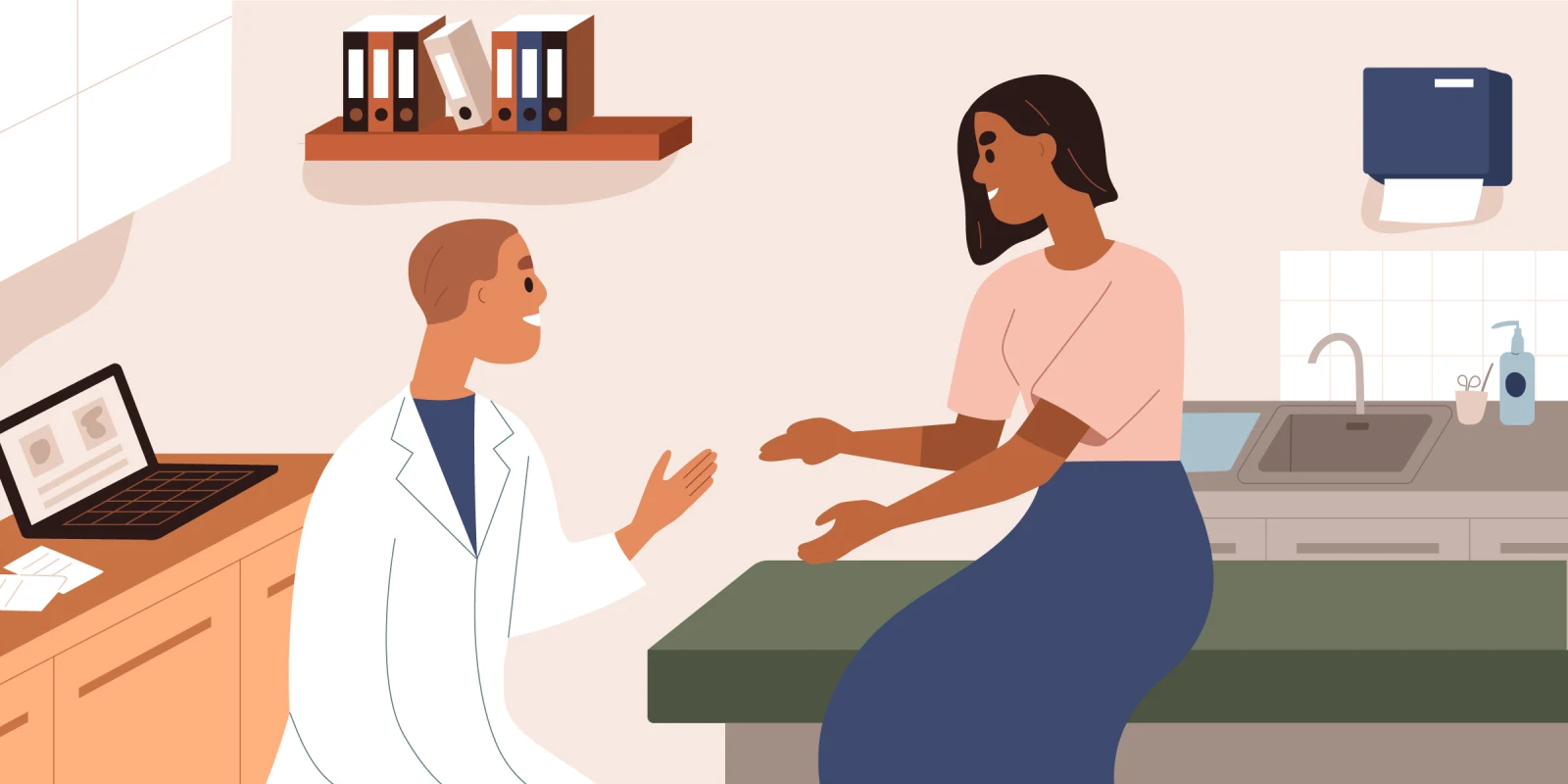The door to the exam room opened. My patient stuck her head out and scanned the hall. It had only been a few minutes since the last time she had done the exact same thing, and it was obvious she had grown more agitated. I motioned the nurse into an empty exam room and asked, “What’s the deal?” The nurse just smiled and said, “That’s your 2 o’clock, a referral from Dr. Riley. Vaginal bleeding.” Before I stepped back into the hallway she added, “Makes the third time she’s done that in 15 minutes.”
Dr. Riley had been in practice for nearly 30 years. He was reputed to have the best bedside manner and undoubtedly had the busiest practice in town. In fact, he was one of the reasons my wife and I settled in town after completing my ob/gyn residency; he and my mother had been playmates as children and his mother was my great aunt’s best friend — they had traveled together to Europe on the Queen Mary, and I’d been there with my family in New York City to see them off. It seemed as if I’d been hearing about Dr. Riley my entire life.
Dr. Riley never had scheduled appointments; it was always first come, first served. Patients would begin arriving at 7:30 a.m., and he would begin office hours around 8:30. Wait times were legendary. Patients would proudly proclaim they had waited four hours only to be outdone by another patient who had waited 4 1/2 hours!
It was with this knowledge that I scanned the schedule on my desk and reviewed the chart. The nurse stepped into my office and said, “Your next patient’s ready, the one from Dr. Riley. She now wants to know how much longer you’ll be.”
Upon entering the exam room, I immediately sat down and apologized for being behind schedule. As I opened her chart I said, “I see you were referred to me by Dr. Riley.”
The patient nodded, her face still revealing a tinge of hostility I didn’t quite understand.
“Do you mind me asking, how long have you been a patient of Dr. Riley’s?”
“Twenty years,” was all she said.
“And in those 20 years, what’s the longest you’ve had to wait to see Dr. Riley?” I asked.
She sat up a little straighter and replied, “I’ve waited up to five hours to see him.”
It was then that I decided to take the plunge: “Maybe you can help me understand something. You’ve gladly waited up to five hours to see Dr. Riley, yet I’ve only kept you waiting maybe 40 minutes and you seem angry.”
Her response was as quick and as brutal as a Civil War amputation. “Well, you’re not Dr. Riley!”
Every clinician has a bedside manner, but not all of them are equal. It’s only natural for each of us to think ours is not just adequate, but that it is that which separates us from our peers. When the clinic administrator presents you with your quarterly survey results, if you’re anything like me, you review the section relating to bedside manner with curiosity. Woe to the clinician who has to defend a patient’s written comment clearly outlining an event “proving” a lack of empathy or other unacceptable behavior.
An entire generation of professionals is at risk when it comes to bedside manner. The advent of social media, texting, and reliance on electronic communication has depersonalized one-on-one communication to the extent many younger individuals do not know how to begin to communicate without a device in their hand. Who hasn’t witnessed a small group of people, every one of them fixated on the palm of their hand, engrossed in the screen of their phone? And it isn’t only the youngest generation. This shift in how we communicate affects all individuals, not just those weaned on cell phones and texting. Even baby boomers, the generation that grew up with dial telephones, are not immune to the threatened erosion of long-established communication skills.
Much of our bedside manner is a composite of who we are, an outward manifestation of our core personality, traits that cannot be easily altered. However, incorporating one or all of the following seven suggestions can assist in creating a bedside manner patients will brag about to others.
1) Interact with your patient, not your computer! Spend the first few minutes you’re in the exam room connecting with your patient, gathering pertinent data without typing the information into your computer. Take the time to enter the information only after you’ve built rapport. Your patient will appreciate the full attention you have given them, and will understand the need for you to take a moment or two to make your entries afterward.
2) Resist looking at the clock when you are with your patient. This is no small task given that our entire day is structured around schedules — but it can be done. Avoid the subtle glance at your watch; it tells your patient their time is up. You might even consider not wearing a watch while seeing patients. After all, the laptop you take from room to room can provide the time in a much more discreet manner.
3) End every visit with a question: “Do you have any questions for me?”
4) Touch your patient, especially during this time of pandemic-induced fear of human interaction. The slightest touch — even if it’s just a hand on the shoulder — goes a long way. Re-taking your patient’s blood pressure is a good way to accomplish this.
5) Check the chart for your patient’s birthday prior to entering the room. You may be surprised to discover a recent birthday, and a simple birthday wish will make their day.
6) Share something about yourself. Of course, you never want to make the visit all about you, but share something small about yourself or your family. Refrain from telling them about your latest trip; rather, tell them something about your child’s soccer game or school production. And when you read or hear something about their child or family member, comment on it.
7) Never linger at the end of a patient visit with your hand on the doorknob. It is only natural when you are about to leave the room for your patient to remember one last thing. When that happens, go back to your chair, put the laptop down, and listen to what they have to say.
Primary care professionals aren’t the only clinicians in need of a good bedside manner. Indeed, given that many specialists receive patients via referral — as I did from Dr. Riley — bedside manner is even more critical because opportunities to build rapport and trust are limited.
I never saw Dr. Riley’s patient again (I had to refer her to another specialist on the gynecologic oncology service at the University of Louisville), but at the conclusion of our visit, I did take care to reiterate my apology for being late, and she graciously shook my extended hand. She smiled when I told her I didn’t know anything about the wait times where she was headed.
How do you build rapport with your patients — particularly those patients that arrive unhappy? Share your most charming tactics in the comments!
Lloyd Holm is a retired obstetrician who lives in Cottage Grove, MN with his wife Gretchen. He has authored two novels and a children’s book and his writings have appeared in the Omaha World Herald, The Female Patient, Iowa Medicine, Contemporary OB/GYN, Hospital Drive, the American Journal of Obstetrics and Gynecology, and Obstetrics and Gynecology. While a member of the teaching faculty at the University of Nebraska Medical Center in Omaha, he received the Dean's Award for Excellence in Clinical Education and The Hirschmann Golden Apple Award. Dr. Holm is a 2021–2022 Doximity Op-Med Fellow.
Illustration by GoodStudio / Shutterstock







